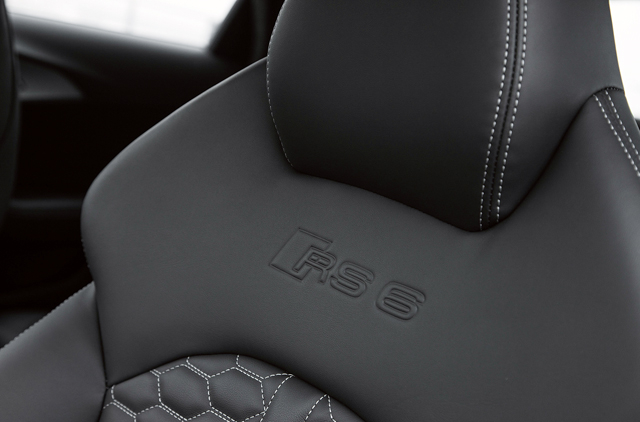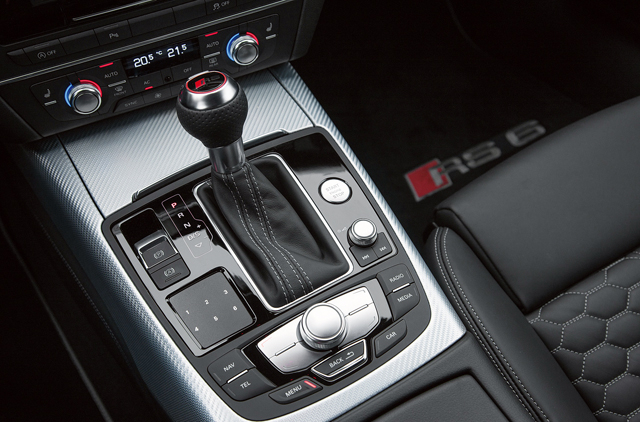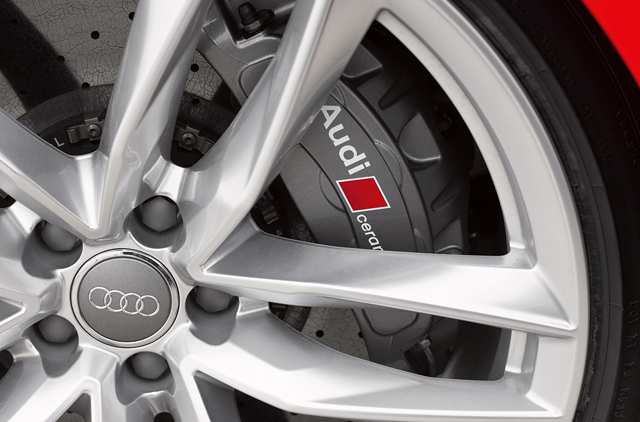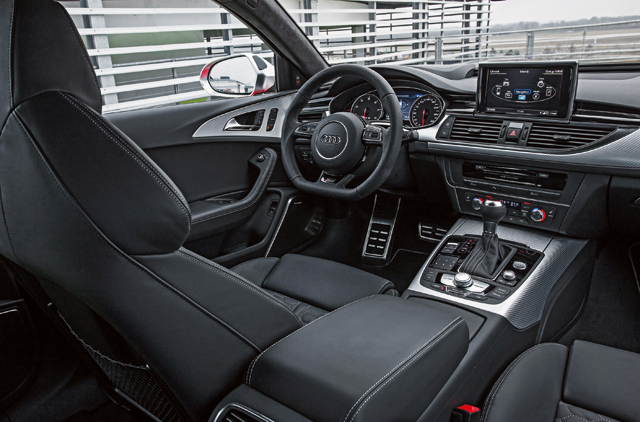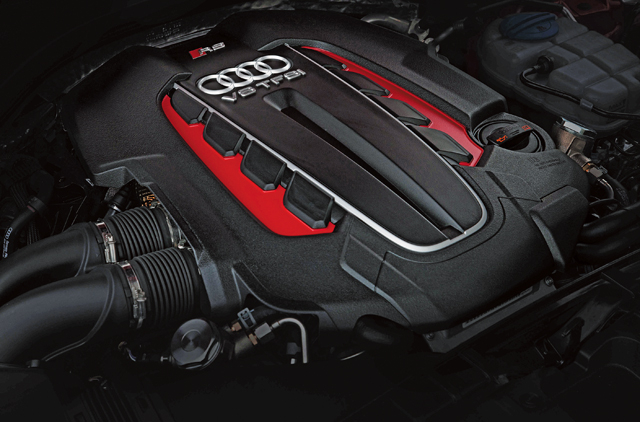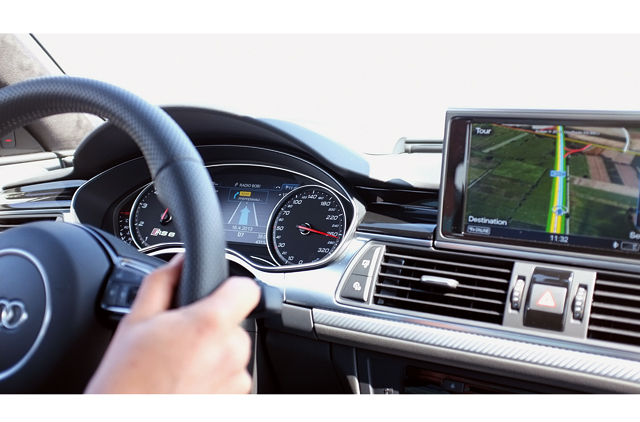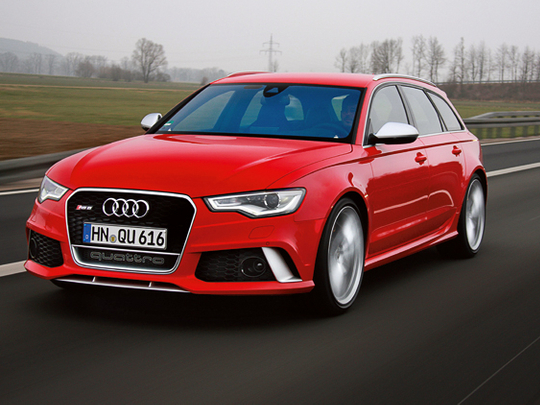
“Honey, I’m just popping out for some milk and eggs.” Three hundred and five kilometers per hour later, and the milk’s churned into Limburger cheese and the eggs have hatched into pterodactyls. What? Stranger things have happened. Like 305kph family station wagons...
The new Audi RS6 Avant is one fast grocery-getter. Avant in French means ‘forward’, but in German, more specifically in the dialect of the Bavarian city of Ingolstadt, it means ‘%^#$^@#’, and that’s straight out of a dictionary.
But I’m not in Munich to get groceries. I am here to officially usher in the spring season, running laps around Bavarian forests and startling hibernating bears awake. The 4.0-litre twin turbocharged V8, on the overrun, sounds like hellfire struck down by Mars himself. I think they raised an alarm over in Poland.
After the RS6 Avant and I have done our bit for nature, waking up teddies and shifting tectonic plates, we will run a 30km derestricted part of the German autobahn (That means no speed limits. No speed limits!) up and down in order to test Audi’s, frankly outrageous, 305kph claim.
Can we do it? Did we die in a blaze of fire wrapped around a spruce? Is this lengthy intro all an elaborate scheme to increase my word count and file this article in time for wheels’ deadline? All these questions, and more, will be answered as soon as Poland calms down again...
But first, let’s remind ourselves that it wasn’t all that long ago when even supercars couldn’t get to 305kph. A Lamborghini Countach couldn’t get there; a Ferrari 288 GTO could just about make it with a tailwind; a Testarossa would fail 15kph short. And now, two or so decades later, you can supposedly go that fast and bring the wife, kids and the dog too. I mean, a Mercedes-Benz SL 65 AMG does 305kph and that’s a two-seater, biturbo, V12-engined dedicated GT. But does it have enough room for milk and eggs?
Our challenge is a difficult one. It is Tuesday, a working day, it’s noon, and Munich’s autobahns aren’t exactly in the middle of nowhere. To be specific they are in Munich, so there is traffic, trucks, and police patrols — which matters least because did I mention this particular portion is derestricted? However, we have a reputation to uphold and professionalism to exhibit and if this is at all possible, safety has to be a prerogative (most of all to other road users).
But first… Oh no, we’ve already covered that. OK, secondly, how have we advanced to the point of walking on the moon, apparently inventing a cure for cancer and now breaking the 300-klicks barrier in family-hauling estates? Audi has explained this to me very succinctly at the international launch of the RS6 Avant, but I will explain it elaborately.
The third generation model takes advantage of Audi’s aluminium knowledge. We definitely associate every new Audi with the brand’s aluminium space frame, but actually the RS6 Avant is mostly steel, yet has still cut roughly 100kg off the kerb weight.
Only a fifth of the new body is aluminium though: cross members, bonnet, front fenders, boot lid, doors… High-strength steel accounts for strategic areas around the passenger compartment for safety, and the rest of the weight saving measures are found in aluminium suspension components, wheels, and new optional carbon ceramic brake discs — each one weighs less than 8kg as opposed to the wave-design 14kg steel disc, itself lighter than before thanks to the curvy chunks taken out along the edges.
This car is still heavy at the end of the day, which is where the twin-turbocharged 4.0-litre V8 comes in to heave the 1,935kg load. Heave is such an understatement here. The torque delivery from 1,750rpm is massive, and uninterrupted with the eight-speed tiptronic transmission. In fact you can have 700Nm of torque all the way to 5,500rpm, which is wonderful since peak power of 560 horsepower takes over from 5,700rpm to 6,600rpm.
We’ve harped on about this V8 masterpiece before in the Audi S6, S7 and S8, but it’s worth repeating. The crankcase is aluminium-silicone and the intake carefully tuned with switchable flaps, which rotate the incoming air, tumbling it into the cylinders ready to explode. This is much more efficient than just a constant stream of smooth air for a better combustion.
Direct injection takes care of the fuel, which is also swirled, and two turbochargers living at the back and sort of in-between (not quite as in-between as in BMW’s V8) the two cylinder banks build up a pressure of 1.2 bar to help with the early torque delivery. All of Ingolstadt’s tricks are at play here.
This V8 can also turn into a V4 as if by magic, or maybe it could be the cylinder on-demand technology, which deactivates cylinders two, three, five and eight when you want to save fuel. The switch is undetectable and it helps make
560 horsepower relatively affordable.
But perhaps even better than the marvellous engine is the new chassis and drivetrain, splitting power 40:60 between the front and rear axle. This means the handling in the twisty bits of our route is predictable and utterly composed with the weighty steering in dynamic mode acting as a telepathic transponder. Where you point it, the RS6 Avant will go.
Under normal enthusiastic driving conditions (i.e. just a little too fast for public roads) the handling characteristics are as neutral as they can get, with more than enough grip from the 285/30 R21 tyres — there was never a screeching complaint.
Look, it’s not a sportscar wagging its tail and communicating with the driver via weight transfer rather than simply vision. It’s a big, heavy car that disguises those individualities with great effect, thanks to a 20mm lower chassis, air suspension with judiciously (and electromagnetically) monitored damping, and those prodigious Dunlop tyres.
To be perfectly fair, the steering lacks feel, which is becoming a bit of an Audi tradition, but let’s face it, this is an estate in case I haven’t said that already. Through the tight turns it’s amazing, confident inspiring and perhaps relaxing, even at speed.
That’s a bit of a recurring theme, actually, since the RS6 Avant isn’t the kind of performance car that eggs you on. It sort of leaves its abundant capability ready to be called on in the background, which is totally acceptable given this car’s continent-crushing job description. Basically, it’s not a Porsche Cayman. But then again, a Cayman won’t do 305kph…
So will the RS6 Avant do 305kph? In a word, no, because when you pick one up from the showroom it’s pegged to 250kph. Audi, however, is being very ungentlemanly these days and will happily sod the German gentlemen’s agreement to delimit your RS6 Avant to 305kph. Apparently, anyway. That’s why I’m busy merging onto the A92 alongside Munich’s airport, to find out.
Zero to 100kph takes less than four seconds in this car and the autobahn on ramp shrinks in an instant. Straight away at a leisurely 200kph a red Porsche 997 fills the Avant’s rear view mirror. My motoring peer Mo, who I’m sharing the day’s driving duties with, reckons it’s a GT2 purely because of the rapid nature of its appearance and also the tell-tale engine air intakes at the rear fenders.
He’s got a point and I reckon it’s a GT2 too; that 530 horsepower widow-making monster capable of darn-near 330kph and 0-100kph in three and a half seconds. But as soon as we politely move out of the way (in Germany people understand lanes) thinking that’s one idiotic fight to pick, the 997 reveals itself to be merely a 500 horsepower Turbo. We know this because it says ‘Turbo’ on the back. Pah, we’ll have him... It’s on now, dummkopf.
The V8 harrumphs, clears its throat, the eight-speed drops a couple of cogs, the twin oval exhaust pipes resonate, and… the red Porsche starts pulling away. Only slightly, mind you. It’s remarkable that a full-on supercar weighing 400 kilos less is struggling to stretch two car lengths into four over the course of 50kph or so.
We stick to his bewinged tail for two, three attempts, but every time our autobahn blitz is broken by a stray-minded imbecile in something like a diesel Smart car or legitimate traffic congestion — if there is such a thing as a 200kph traffic jam (I love the autobahn). The RS6 hovers between 200 and 220 or thereabouts with ease. Mo and I able to hold a normal conversation without shouting — noise suppression is excellent from the tyres, mechanicals and the wind.
Now the sat-nav lady is adamant that we’ve got only a few more kilometres to go before our exit, at which point, sure, we could just turn around again and have another go, but it’ll be Mo’s turn in the driver’s seat. So I give it everything in one last-ditch attempt to break my four-year record set in the vicinity of the Nürburgring in a V12 Aston, resolute to leave any braking for the absolute last second and put my life in the 390mm front stoppers.
I strike a lucky open run, we crest 240, 250, 260kph… There’s a long way to go and it’s obvious that another couple kays would be required for the claimed V-max. The engine is eager, pulling proudly but it seems that at this point it’s really all about aerodynamic drag. Then we hit 270kph and that’s it. I have to give up due to traffic, even with plenty of legs left in the RS6.
Look, I know it’s not 305kph, but with other cars whizzing past literally a foot away from the Avant’s side mirrors and the ever-present danger of another Smart moron, it’s as much as we’re willing to risk today. The remarkable thing is just how easily, how steadfastly and resolutely and comfortably and also effortlessly this two-tonne family station wagon demolished the 250kph ‘gentleman’s agreement’ barrier, and then just kept barrelling along, steamrollering on at such a rate that the 997 Turbo gave up and surrendered towards the slow lane. It’s either that or he reached his autobahn exit, but I’m sticking with surrender. We failed our mission today, but failure’s never felt so accomplishing.




